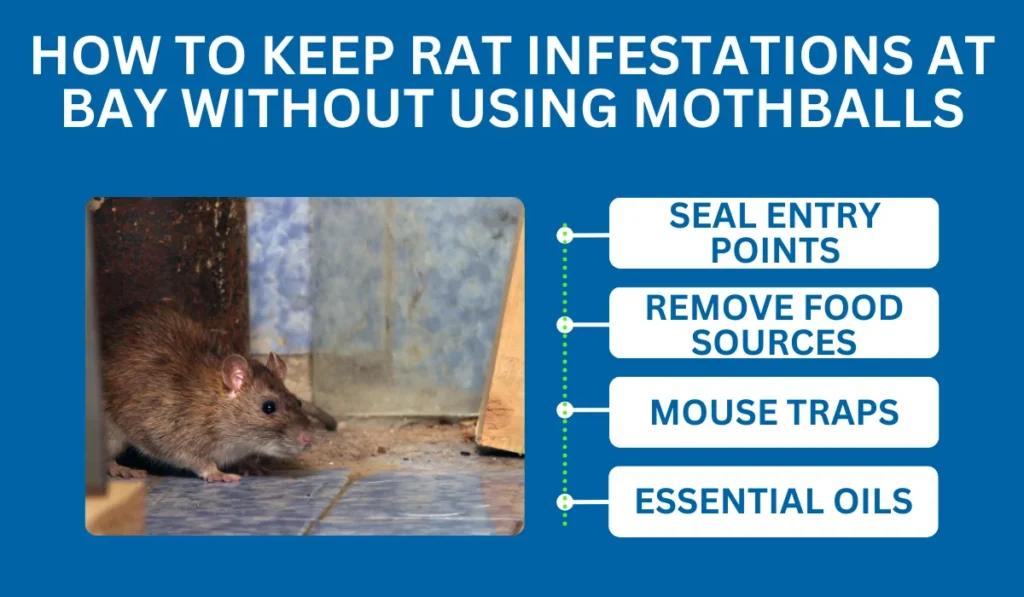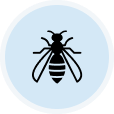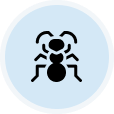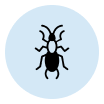If you’ve ever dealt with rats or mice, you might have come across the idea of using mothballs as a deterrent. While mothballs are often touted as a DIY solution, they are not as effective as many people believe.
Here’s a closer look at why mothballs might not be the best option for rodent control and what you can do instead.
Key Takeaways
- Mothballs are not approved for rodent control and are ineffective in open areas like attics or garages.
- Rodents may temporarily avoid the smell of mothballs, but this does not provide a reliable, long-term solution.
- The compounds in mothballs pose risks to humans, pets, and the environment if used improperly or in large amounts.
- Professional pest control offers safer, more effective methods for rodent control, such as exclusion, traps, and natural deterrents.
What Are Mothballs, and How Do They Work?
Mothballs are small, white balls made from large amounts of naphthalene or paradichlorobenzene. These substances slowly release toxic chemical vapors to clothes moths, larvae, and other pests in enclosed spaces like closets.
The strong smell of mothballs is thought to repel critters like mice and rats.
However, the active ingredients in mothballs—naphthalene or paradichlorobenzene—are only effective in very high concentrations.
In typical mothball usage, the amount of these compounds isn’t strong enough to act as a reliable rodent repellent in open spaces, such as your attic or garage.
Also, the use of mothballs outdoors or in large, unsealed areas can violate Environmental Protection Agency guidelines, as they are not approved for rodent control.
Why Aren’t Mothballs a Safe Solution for Rodent Problems?
While the vapors from mothballs have a strong smell that rodents dislike, they are unlikely to keep mice and rats away entirely. Here’s why:
- Limited Effectiveness: Mothballs are not proven to repel rodents consistently. They may temporarily deter some mice or rats but are not a long-term solution for infestations.
- Health Risks: The compounds in mothballs are toxic to humans and pets if inhaled or ingested in large quantities. Exposure to mothball vapors can cause respiratory problems and damage to red blood cells.
- Environmental Concerns: Using mothballs improperly can harm the environment and violate federal regulations.
How to Keep Rat Infestations at Bay Without Using Mothballs

If you’re dealing with a rodent problem, there are safer and more effective home remedies to consider:
- Seal Entry Points: Use steel wool, caulk, or other materials to block gaps and holes where rodents might enter your home.
- Remove Food Sources: Store pet food and human food in airtight containers and promptly clean up crumbs or spills.
- Mouse Traps: Snap traps and live traps are effective for catching rodents. Place them where you’ve noticed droppings, gnaw marks, or other signs of rodent activity.
- Essential Oils: Substances with strong scents like peppermint oil can repel mice. Soak cotton balls in the oil and place them near entry points or areas of activity.
Are Mothballs Worth It for Rodent Infestations?
While the strong smell may provide some temporary relief, they do not address the root of the rat problem. For long-term rodent control, focus on exclusion, sanitation, and professional pest control solutions.
If you’re still struggling with a rat or mouse infestation as a homeowner, Simple Pest Management can help you reclaim your space safely and effectively. Contact us today to schedule an inspection and take the first step toward a pest-free home!
 1st pest control service just $49. Must schedule service online.
1st pest control service just $49. Must schedule service online.






 You’re supporting a small, local business
You’re supporting a small, local business


